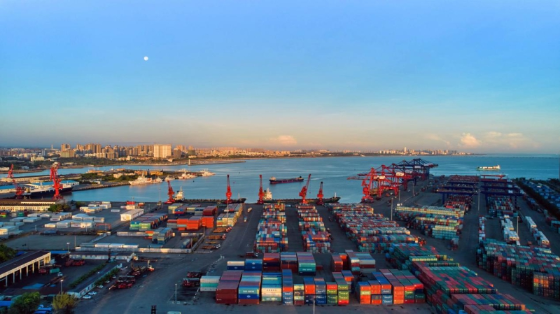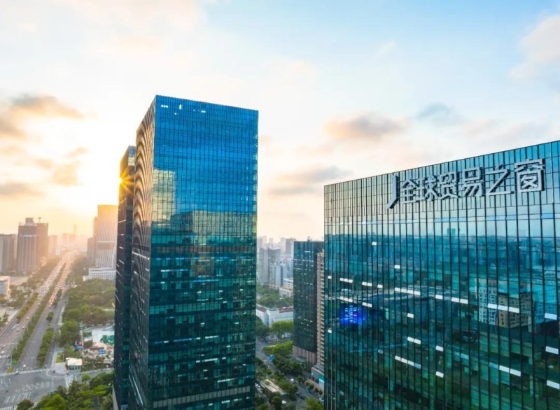
New Guide Shows Firms How to Use FTP Tariff Exemption Policy
By / HIMC / Updated:19:14,29-September-2025
With Hainan Free Trade Port island-wide special customs operations due to launch on December 18 this year, many manufacturing enterprises have been wondering how to capitalize on the Import Tariff Exemption Policy for Products with No Less than 30% Added Value after Processing. Recently, Hainan issued an announcement refining the requirements of the Interim Measures of the Customs of the People's Republic of China for Tax Collection and Administration of the Import Tariff Exemption Policy for Products with No Less than 30% Added Value after Processing in the Hainan Free Trade Port. The announcement outlines the standardization of tax collection and administration procedures for value-added processed goods and introduces a new service "guide" for enterprises seeking to benefit from the landmark policy.

An aerial view of Yangpu Port in Danzhou, an important gateway for international trade in Hainan.
Applying for eligibility
Enterprises should first apply for eligibility. Once approved, they should register their information with Customs via the China (Hainan) International Trade "Single Window" (Hainan Single Window). Customs will then assess enterprises' compliance with customs supervision requirements. Once approved, they can complete their registration by establishing a dedicated electronic account book on the customs smart supervision platform.
Calculating the value-added processing rate
Registered enterprises must complete value-added processing declaration procedures through the Hainan Single Window before finished products enter the mainland. If the added value reaches the minimum 30% threshold, the system will automatically generate a confirmation number for domestic sales exempt from customs duty (confirmation code) and transmit it to registered enterprises via the Hainan Single Window. If the added value has not reached the minimum 30% threshold, enterprises can still benefit from the policy through cumulative calculation. Registered upstream enterprises can apply for a cumulative calculation number (cumulative code) and transfer it to relevant downstream enterprises through account book transfer. Registered downstream enterprises can use the price information of imported and domestically purchased materials contained in the cumulative code to calculate the value-added processing rate.
Calculating the price of materials
Where the prices of imported materials are denominated in foreign currency, registered enterprises should convert them into CNY using the exchange rate applicable on the day of declaration and tax payment for calculation. If the exchange rate has changed between the date of declaration and the date of tax payment, the value-added processing rate needs to be recalculated. For batch imports or where batches cannot be matched, prices will be calculated according to Measures of the Customs of the People's Republic of China on the Determination of Dutiable Value of Bonded Goods for Domestic Sale.

An aerial view of office buildings in Haikou, Hainan Province. (Photo: Hainan Daily)
Managing declarations
The Hainan Free Trade Port has launched a one-stop solution covering various scenarios. Whether operating within special customs supervision zones or using bonded or "zero-tariff" materials for processing outside such zones, all registered enterprises may complete customs declarations for their finished products through the Hainan Single Window, as required by this policy, before the products enter the Chinese mainland.
Discover

Hainan Tourism Showcased at Japan Tourism Expo 2025 in Nagoya
17:18,01-October-2025
Hainan FTP Plans World-class Ophthalmology Hospital
17:18,01-October-2025
HainanFTP: My Hainan Story | Egyptian Scientist Grows Roots in Hainan’s Fertile Soil
17:18,01-October-2025
Georgian Airlines Establishes Haikou Office in Jiangdong New Area
17:18,01-October-2025
New Guide Shows Firms How to Use FTP Tariff Exemption Policy
19:14,29-September-2025
HainanFTP: My Hainan Story | Dr. Jørn Thodesen: From Norway’s Fjords to Hainan’s Seas
19:25,30-September-2025










 thisishainan@163.com
thisishainan@163.com